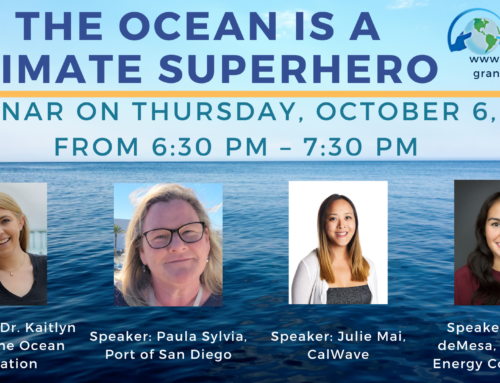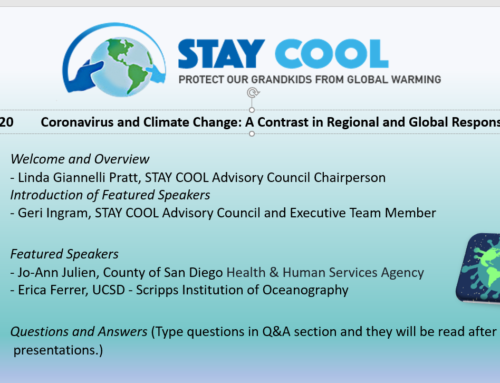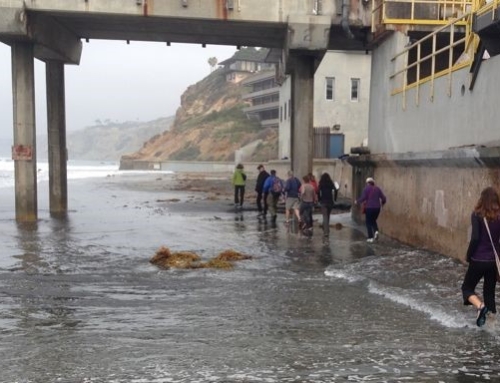STAY COOL for Grandkids is committed to bringing cutting edge information about climate change and its impacts. On October 11th, we presented a forum that highlighted current research about changes to our land-based ecosystems – particularly with regard to wildfires – that are resulting from climate change, and appropriate planning policies that could properly address these impacts. We had two featured speakers: Dr. James Randerson, Professor of Earth Systems Science at UC Irvine and Robert Leiter, who is a member of the STAY COOL Advisory Council. Robert Leiter has been a leader in local land use planning for more than 30 years, serving as the Planning Director for the cities of Escondido and Chula Vista, and for SANDAG, the regional planning agency for San Diego County.
Dr. Randerson led the presentation with an overview of the effects of climate change on California wildfires. He highlighted one recent research project which concluded that “… a 1°C increase in daily temperature in the Sierra Nevada increased the probability of ignition and burned area by about 20% during 2001-2018.”
Overall, Dr. Randerson summarized what we know about climate change and California wildfires as follows:
- Summer temperatures are rising and will continue to rise, causing fuels to dry out faster.
- The warmer temperatures will increase the probability of ignitions.
- Fires that are ignited will grow more quickly and burn more area.
- We can expect more intense summer fire seasons over the next few decades.
- Precipitation may change by a smaller amount, there is some evidence that the north coast will get wetter, but southern Sierra and Southern California will get drier.
- Climate is likely to become more variable from year to year, with both dry extremes and wet extremes becoming more common.
- Santa Ana winds are likely to get drier, but they may not become stronger or more frequent.
- The precipitation season may become compressed so that we get more rain in December and January, and less during fall and spring.
Robert Leitner’s talk provided an overview of a recent report published by the American Planning Association Regional and Intergovernmental Planning Division. While the report looked at a variety of impacts on ecosystems in the San Diego region that are expected as a result of climate change, the focus of this presentation was on the increased frequency and severity of wildfires.
He then discussed the ways in which regional and local governments can address these impacts in the context of updating city and county General Plans. Pursuant to SB 379, local governments are now required to update the “Safety Elements” of their General Plans, taking into account the projected impacts from climate change on natural hazards such as sea level rise and wildfires. The law provides an overall methodology for preparing these plans, and defines the roles of state, regional and local government agencies in this process.
Following the presentations, Randerson and Leiter fielded several questions from the audience, and discussed ways in which an informed public can help to make sure that these issues receive the attention that they deserve. STAY COOL will be hosting another forum on this topic in Inland North County in February 2020; stay tuned for details!



